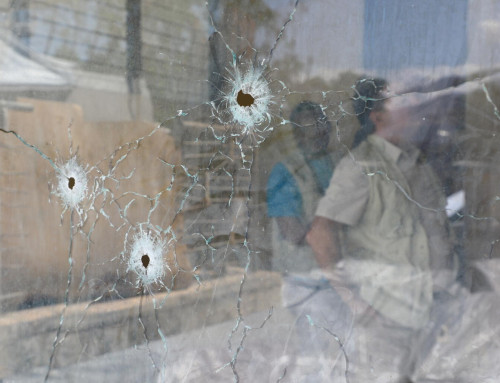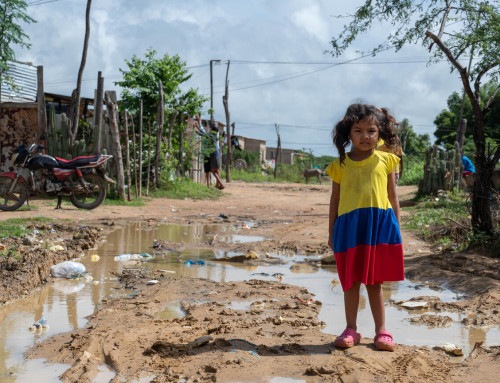7-Jun-01
Having returned from a 10-day visit to the Democratic Republic of the Congo, Olara A. Otunnu, the Special Representative of the Secretary-General for Children and Armed Conflict, told correspondents at a Headquarters press briefing this afternoon that, without the protection and the development of children, there could be no future for any country.
During his visit, Mr. Otunnu was able to visit the key zones in the country, as well as meet with key political and military leaders, including President Joseph Kabila and the leadership of the Rassemblement Congolais pour la D mocratie (RCD) and the Front de Lib ration du Congo (FLC). He was struck not only by the direct impact of the war on children, but also by the indirect impact created by the conditions of war.
In providing a sense of the magnitude of the problem, he said that the vast majority of the 2 million people displaced by the war were women and children. Hundreds of thousands of children suffered or died from severe malnutrition and preventable diseases because of conditions created by the wars. According to a recent study by the International Rescue Committee, since the outbreak of hostilities in August 1998, there had been 2. 5 million excess deaths in the eastern part of the country alone, the majority of them being children.
With regard to some of the concrete outcomes of the visit, he said that in addition to raising particular awareness about the issue within the country, the political leaders had agreed to make the protection and rehabilitation of children a national and political priority, including in the inter-Congolese dialogue and in the peace process.
On the issue of child soldiers, Mr. Otunnu had proposed a five-point programme of action that was accepted by all political and military leaders. The programme involved a complete stop to all recruitment and participation in the war of young people below the age of 18, and the establishment of a mechanism to monitor and report on the implementation of that commitment.
It also involved, he continued, a major public awareness campaign to sensitize the military, civil society and local communities; joint visits by military authorities, United Nations agencies and humanitarian non-governmental organizations to military camps; and the establishment of structures to receive, demobilize, rehabilitate and reintegrate child soldiers.
Another positive outcome of the visit, he said, was that the Government had just ratified the Optional Protocol [to the Convention on the Rights of the Child] banning the use of children in armed conflict below the age of 18. In doing so, the country had become the fifth State to ratify that Protocol. He hoped that the Protocol would receive the necessary 10 ratifications to enter into force by the time the General Assembly held its special session on children in September.
Otunnu Briefing – 2 – 7 June 2001
In the end, his key message to the Congolese leaders was that it was not enough merely to agree to measures: it was also necessary to translate them into concrete actions on the ground. Secondly, while the international community would be ready to assist, the primary responsibility for reversing the present condition of children in the Congo rested with the Congolese leaders.
The main concerns brought to his attention by the children and parents he met were for the international community to help end the war and the looting of natural resources in the Congo and to begin inter-Congolese dialogue. The looting of natural resources was of particular concern, he said. The widespread and systematic looting of gold, diamonds and timber from the country were an outrage, as it was robbing the children of their birthright and the resources that should be used to provide for their education, health care and development.
He was encouraged by three things during his visit, he said. They were the very strong commitment of all sectors of Congolese society to preserve their national unity; the strength and engagement of civil society all over the country; and the resilience and determination of local communities, especially women and children. “A united and healthy Congo is the natural locomotive for development and social progress in that zone of Africa. “
Having concluded his visit, he appealed to the international community to reach out to the Congolese children with concrete assistance, especially for the rehabilitation of schools at the primary level and health-care centres, and the provision of resources for the demobilization of child soldiers. Those measures were necessary to reverse the trend of despair and exploitation, and would serve as means of protection, rehabilitation and prevention.
Asked about the number of child soldiers in the Democratic Republic of the Congo, he said that there were a legion of child soldiers in all the armed groups and armed forces. While he did not have reliable estimates, the number was certainly in the tens of thousands.
He added that the problem of child soldiers was not just what was happening within the Congo. Increasingly, there were cross-border activities in the recruitment and use of children. Not only were children being taken from the Congo into neighbouring countries, being trained and brought back to fight in the country, but also children from neighbouring countries were being recruited or abducted and sent to fight in the Congo. In addition to the measures that must be taken within the country, a subregional initiative was needed on the issue.





